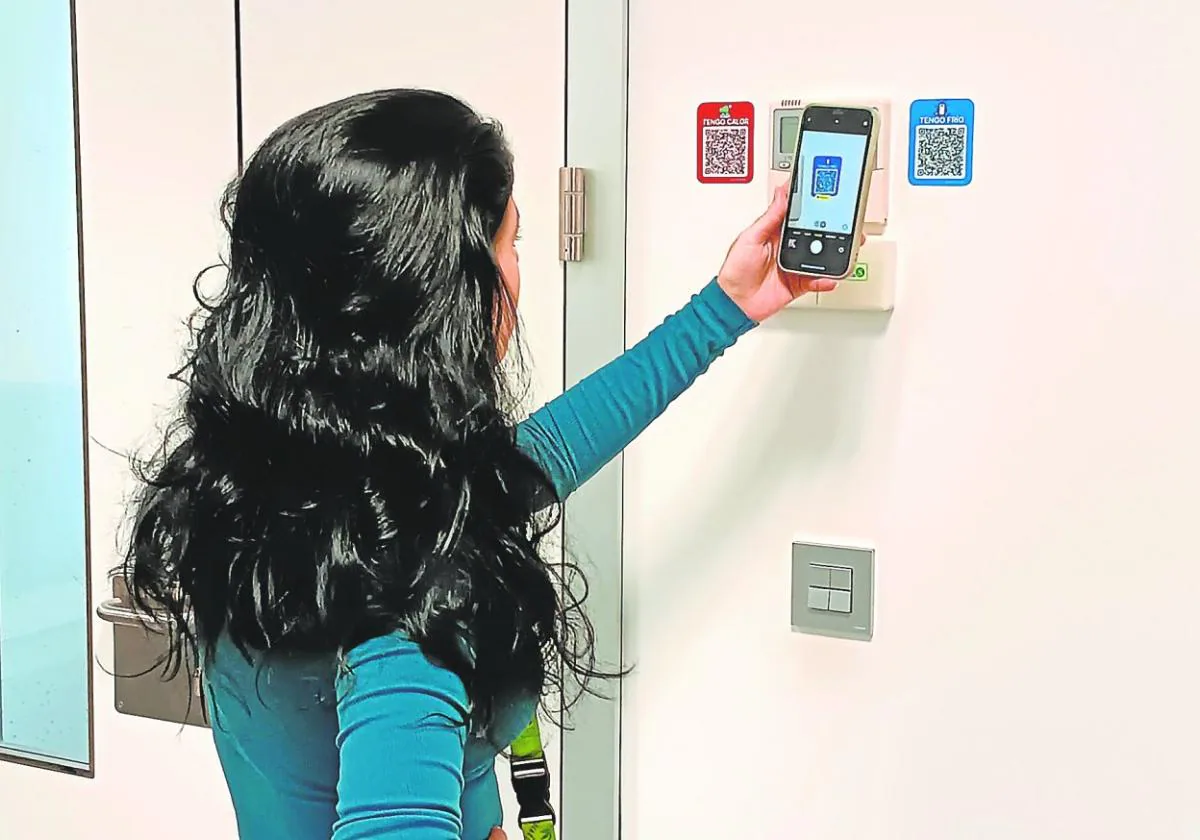One of the most complex challenges that any worker faces in his daily work is agreeing with his colleagues on the temperature of the air conditioning or heating device. Review the number of times you have encountered the problem and you will see that this is not an exaggerated statement. A company derived from the University of Murcia (UMU) is working on a specific system to solve it.
The goal, as researcher Alfonso Ramallo, head of the project, summarizes, “is to democratize the control of air conditioning in spaces, using ‘feedback’.” [los comentarios] “For occupants”, so that the temperature can be “set to a value that suits the taste of the majority”, while looking for “the temperature range that minimizes complaints”. It is about reaching an agreement quickly and without discussions and arguments, while taking advantage of the advantages offered by technology. “The system is also linked to a comprehensive platform capable of making recommendations in case the ideal temperatures are not sufficient to properly supply energy,” for example. In such cases, “the platform is able to send personalized messages to optimize building use and air conditioning.”
Basically, Ramallo’s team’s proposal involves developing a new thermostat and designing an algorithm and app called “Smart Comfort 4 All,” with the goal of “increasing employee satisfaction and productivity at the same time.” Electricity costs.
This development is the result of ongoing research that is in turn part of the so-called Phoenix Project, funded by five million euros, led by UMU Professor of Telecommunications Engineering Antonio Scarmeta. Ramallo adds that he will test “in pilot experiments in five countries how to make buildings more connected to the devices inside them,” while at the same time “making them more energy efficient and less vulnerable to cyber attacks.” The Phoenix project, promoted by the European innovation program Horizon 2020 (H2020), concludes next month, after just over three years of development (it started in September 2020).
“crowd sensing”
“Crowd sensing,” as the specialist calls the technology used to control the climate control, which we can translate as “crowd sensors” or “crowd detection,” collects data from a specific group of people, “as if they were acting as sensors in terms of Volume or a property of space. In this case, Ramallo specifies, “The information we want to collect through this technology is the thermal sensation of the occupants of the office, room, or other space.” To do this, each resident can communicate whether they feel hot or cold through an app. On the mobile phone, without knowing its temperature in the experimental tests that the researchers subjected it to.It is not a matter of looking at the shape to conclude that it is too hot or too cold, but rather being guided only by the feeling of the body.
“Delegating control to an algorithm that also takes others into account is best,” explains engineer Alfonso Ramallo.
This was not the first choice, as the researcher recounted how at the beginning of the concept tests they used QR codes to collect votes about the coldness and temperature of the room. However, by using a smartphone, they have been able to facilitate access even more, directly from the workplace. “Devices have also been designed and deployed that allow old air conditioners to be connected to the Internet, so that they can be controlled by a system that determines the temperature based on sounds.”
In the approved system, data is collected on a platform “so that the algorithm subsequently determines from this information the temperature needed to set up air conditioners or heating systems.”
“The thermometer can miss an air current, but the person experiencing it certainly does not.”
“We in our group understood that this solution had great potential,” Ramallo says, demonstrating the inefficiency of using a central thermostat in frequent open-plan workspaces occupied by ten or fifteen people. “In addition, he notes, the control of these thermostats does not always result from the consensus of those who occupy the rooms.”
Part of the research team headed by Alfonso Ramallo at the center.
UMU
incompetence
We face another case of inefficiency when, upon entering a hot office from the street, we tend to set the thermostat to temperatures that we will not really need, resulting in “excessive energy consumption”. Usually, the room we enter is already tolerable, or close to that. In these cases, “delegating temperature control to an algorithm that also takes others into account results in better control.”
When you walk into a hot office, the tendency is to set the thermostat to temperatures that are not the most appropriate.
In addition to solving the problem at all times, the system also makes it possible to identify points that require specific renovation, “in light of the complaints of the workers there.” Standing next to a sunny window is not the same as staying in an isolated corner or under the roar of an air conditioner. For example, thermometers and other sensors might miss an air current, but a human sensor experiencing them certainly wouldn’t. “This exposure of air conditioning deficiencies in the environment, as well as the reduced consumption provided by indirect control of thermostats, increases the energy efficiency of buildings,” the expert concludes.
Alfonso Ramallo, “Smart Comfort 4 All” coordinator.
UMU
More studies
Ramallo emphasizes that this field has been little explored in Spain, as well as in the rest of the world, “as far as we know.” He explains that the so-called “science of smart buildings has now reached a very fruitful stage, and more and more publications and studies are being conducted in this field.” He estimates that at the moment “there are few other groups in the world doing tests similar to the ones we are doing.”
The system also makes it possible to identify points that require specific renovation thanks to worker complaints.
To ensure “moving forward together,” he explains, “the results obtained are published in scientific journals and presented at conferences.” Pure science for the difficult task of getting everyone to agree to air conditioning at work.
We are 6% less productive for every degree of comfort
Thermal comfort has implications that may be more important than they seem “intuitively.” Industrial engineer Alfonso Ramallo is clear that “it is essential in our homes,” but he also adds that “looking at it from a cooler point of view,” “worker productivity is an important factor” in this variable.
Ramallo cites studies showing how in some jobs “productivity may decrease by up to 6% for every degree outside a worker’s comfort temperature.” The researcher puts the data into context by providing some additional figures: “The physical infrastructure (building) to accommodate the worker is estimated to represent a cost” of around €30 per person per month (taking into account larger buildings). Services, electricity, air conditioning, water, internet, etc. “It works out to about 300 euros per person per month.”
At the same time, he confirms that “the cost of workers is about 3,000 euros per person per month.” Taking all these numbers into account, he concludes, “it is easy to see that the cost of reduced productivity due to unfavorable conditions is very large and must be taken into account in the first place.”





